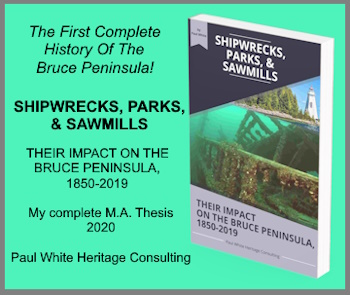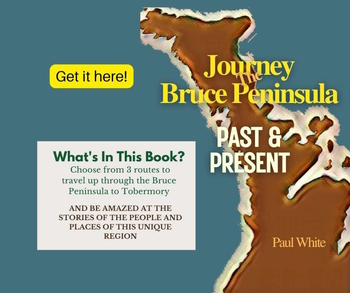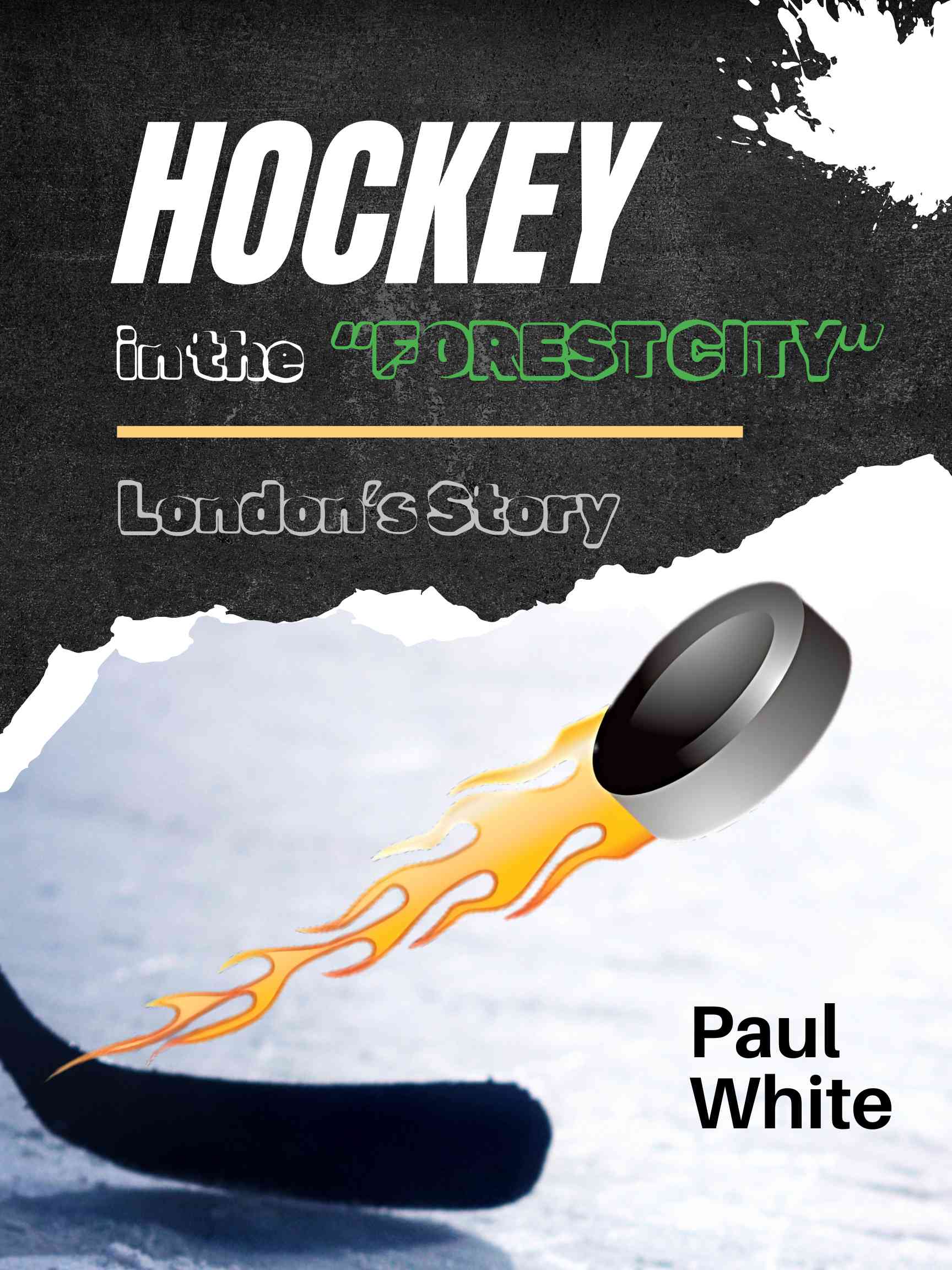Gillies Lake:
aka "Ghost Lake"
Gillies Lake: aka Ghost Lake has a mysterious past as its original name, "Ghost Lake", implies.
Gillies Lake or "Ghost Lake" as it is also known, is located near the northeast shore of the Bruce Peninsula, overlooking the beautiful waters of Georgian Bay.
Although the first image one has of this natural phenomenon is one of awe. There is also lurking in the back of the mind a sense of foreboding. After all, one has to wonder what caused this eerie freak of nature?
Writing in the mid-twentieth century, in The Bruce Beckons, author Sherwood Fox described "Ghost Lake" as it appeared from an airplane, as “a long, narrow splash of white enamel dropped on the mottled, green-gray pavement of forest and limestone.”
Fox continued on to say that even “the aquatic plants that project above the surface of the water are coated with the dried spray of whitewash” and that “the many kinds of tiny mollusks that are seen throughout the shallows are glaring white.”
Adding to the mystique of "Ghost Lake" is a rare species of fish that early native and non-native visitors discovered. Called “mountain trout” they had jet black backs, but their underbellies, sides, fins and flesh were chalk white.
Scientific examination of this uniquely coloured fish later identified them as a variation of lake trout.
Now the probable explanation for "Ghost Lake’s" eerie overwhelming whiteness is due to the fact that the lakebed at the western end is a shining bed of marl. However, a native legend provides a much more colourful rationale for the lake’s appearance.
Native Legend Tied to Gillies Lake
The legend that has survived the centuries tells the story of a large group of natives who had journeyed to the lake and set up a camp to fish in the late weeks of winter.
A native village of huts had been built on ice, to facilitate the harvesting of the teeming numbers of fish in the lake.
One day, without warning, there was a loud, almost deafening bang. The natives who had not been on the ice at the time looked up from their shoreline positions just in time to see the ice disappear into the depths of the lake, taking with it the homes and the people who were in them, to a watery grave.
A few natives survived the catastrophic event by hopping from one small ice floe to another until they reached the safety of the shoreline.
The native legend suggests that the whiteness of the lakebed is due to the bones of those who lost their lives that day.
But "Ghost Lake" is unusual for its shape and location as much as it is for its colour.
"Ghost Lake" is about two miles long and at its widest point it spans about half a mile. Its eastern shore lies precipitously close to the edge of a steep cliff that plummets sharply to the Georgian Bay shoreline below.
Many have wondered why the lake does not simply pour its contents over this cliff and create a magnificent waterfall.
Gillies Lake is very shallow at its western end, gradually deepening until reaches its eastern terminus, where the lakebed plunges to unfathomable depths.
Once again, native legend provides an answer to this geologic formation. The story suggests that spirits hollowed out the eastern end.
However, science has now provided a response. Geologists suggest that before the lake was formed there were massive limestone caverns. Because the roof of the caverns were only a thin shell separating the void from the surface, the ice from various ice ages managed to crack and crush the caverns' thin cap. As time passed, water from springs, and winter run-off created the lake.
The existence of "Ghost Lake" and the stories surrounding its creation and colour are very colourful to say the least. But, if you are looking on a map of the Bruce Peninsula for "Ghost Lake" you will not find it. Because, today it is called Gillies Lake, a name bestowed upon it after European settlement reached the Bruce Peninsula.
A version of this story first appeared in my Local History column in the Owen Sound Sun Times.
Discover More About the Bruce Peninsula
Getting to the Bruce Peninsula is a relatively easy driving trip. Here are driving directions from three regions to the peninsula.
Bruce Peninsula Lumber History details the impact of the forest products industry on the development of the region.
Bruce Peninsula Lumbering provided the stimulus to develop and grow the pioneer economy on the newly settled Bruce Peninsula.
Bruce Peninsula Municipal Politics: No matter what the venue, or the issue, seldom is a popular decision made that suits everyone.
Bruce Peninsula Travel Routes were often a matter of debate because in the early years, land travel was virtually unattainable for settlers and lumbermen alike.
Bruce Peninsula winters could be difficult, especially in pioneer times when transportation connections were limited to only a few months each year.
Colpoys Bay Vista - Awesome! A short drive from either Wiarton or Owen Sound is one of the most magnificent views to be found in the province of Ontario!
Forest Products on the Bruce Peninsula contributed greatly to the growth and development of that region of the province of Ontario.
Gillies Lake: aka Ghost Lake has a mysterious past as its original name, Ghost Lake, implies.
Great Grey Owls on the Bruce Peninsula was a surprise discovery for ornithologists and others. Sadly, the story of their visit had an unfortunate conclusion.
Pioneer Campers: Hope Bay mostly considered the peninsula untamed wilderness and some of the locals were not about to disappoint them!
Pioneer Missionary James Atkey arrived on Colpoys Bay to minister to the native community near Oxenden until a treaty uprooted his parishioners.
Pioneer tourists first visited the Bruce Peninsula in the 1800s and the region continues as a great recreational and tourism destination today!
Pioneer Vacations on the Bruce Peninsula got an eerie start in the Hope Bay region of the peninsula.
Lighthouses Lighthouses were vital to Georgian Bay Sailing.
A Flowerpot Island cruise is not only entertaining, but it is also very educational as you will see things that you have never viewed before!
Travel the Bruce: Owen Sound to Wiarton A wonderful journey from Owen Sound to Wiarton.
Travel the Bruce: Wiarton to Tobermory Relaxing and historic journey.
Bruce Peninsula The Bruce Peninsula is a compelling place, with a rich history, to visit. Once you have traveled there, we guarantee that you will return, again and again!





